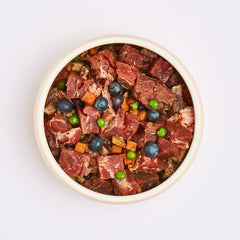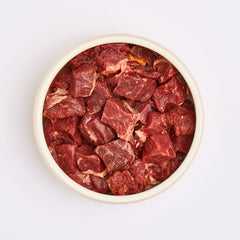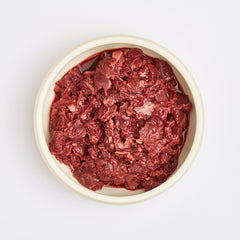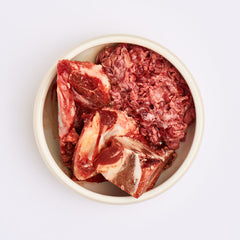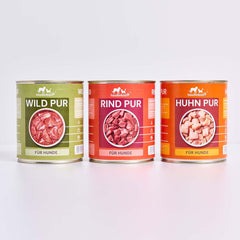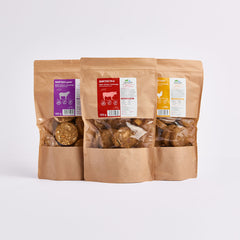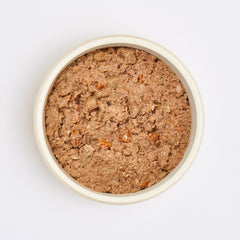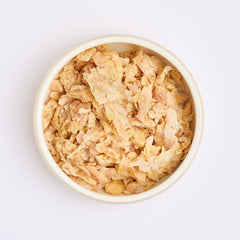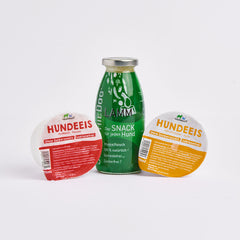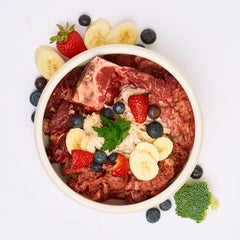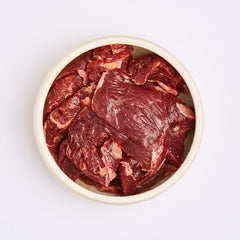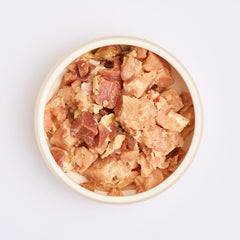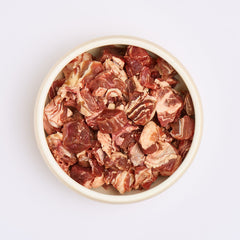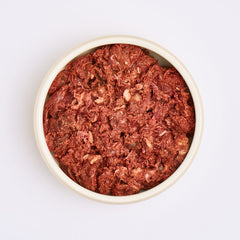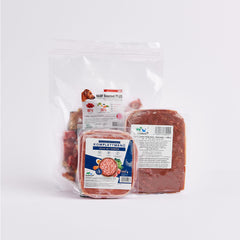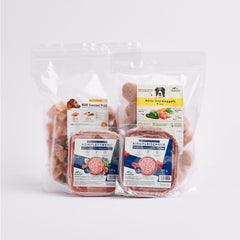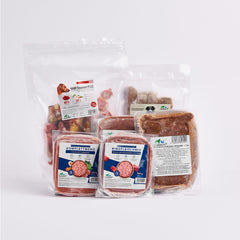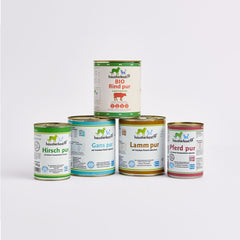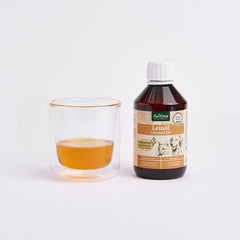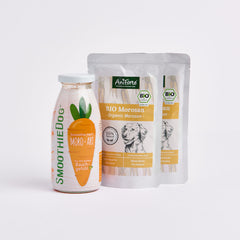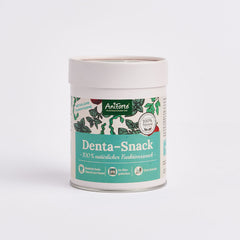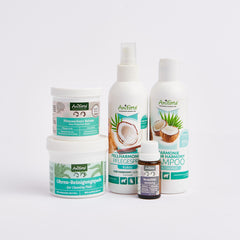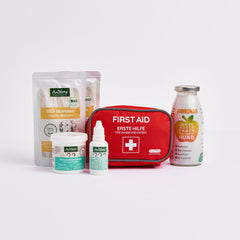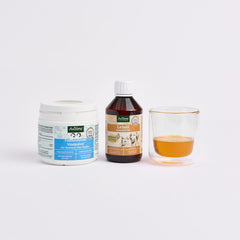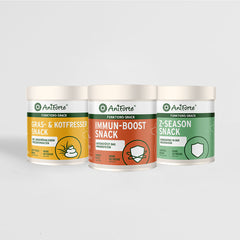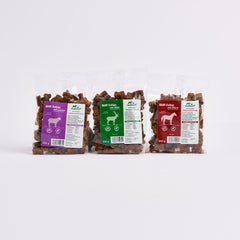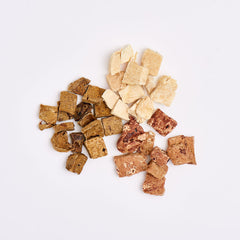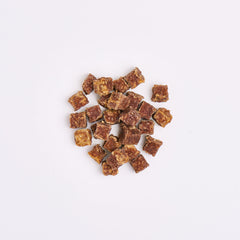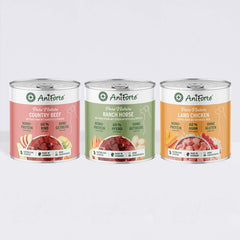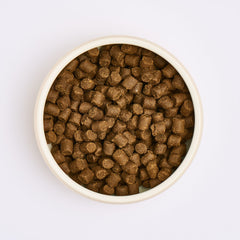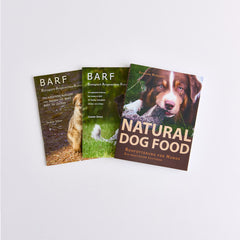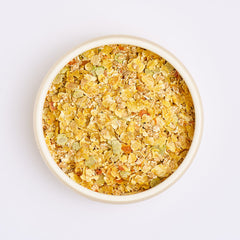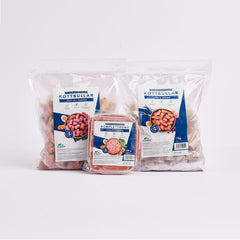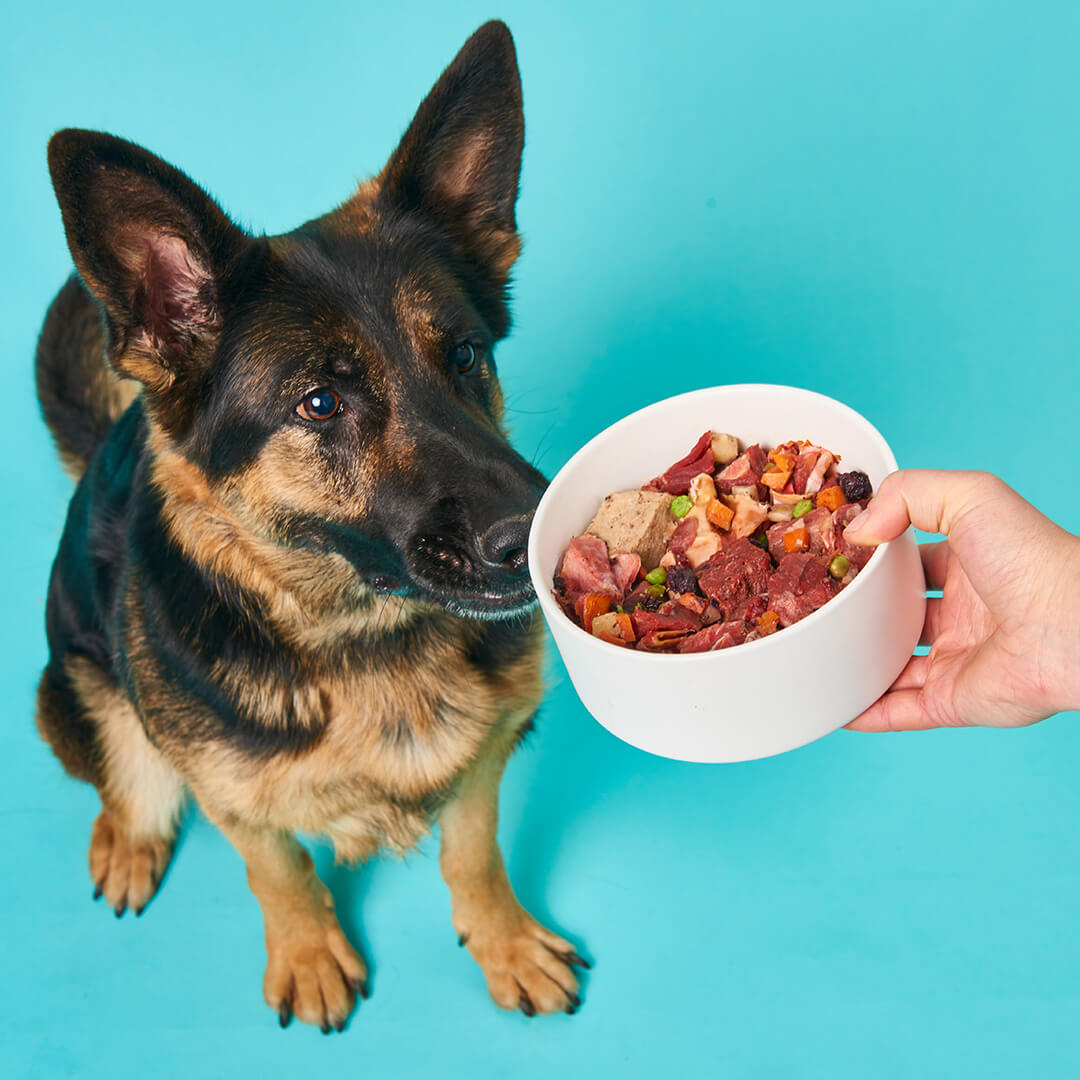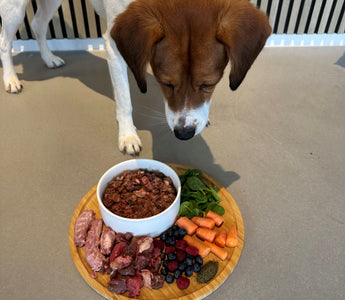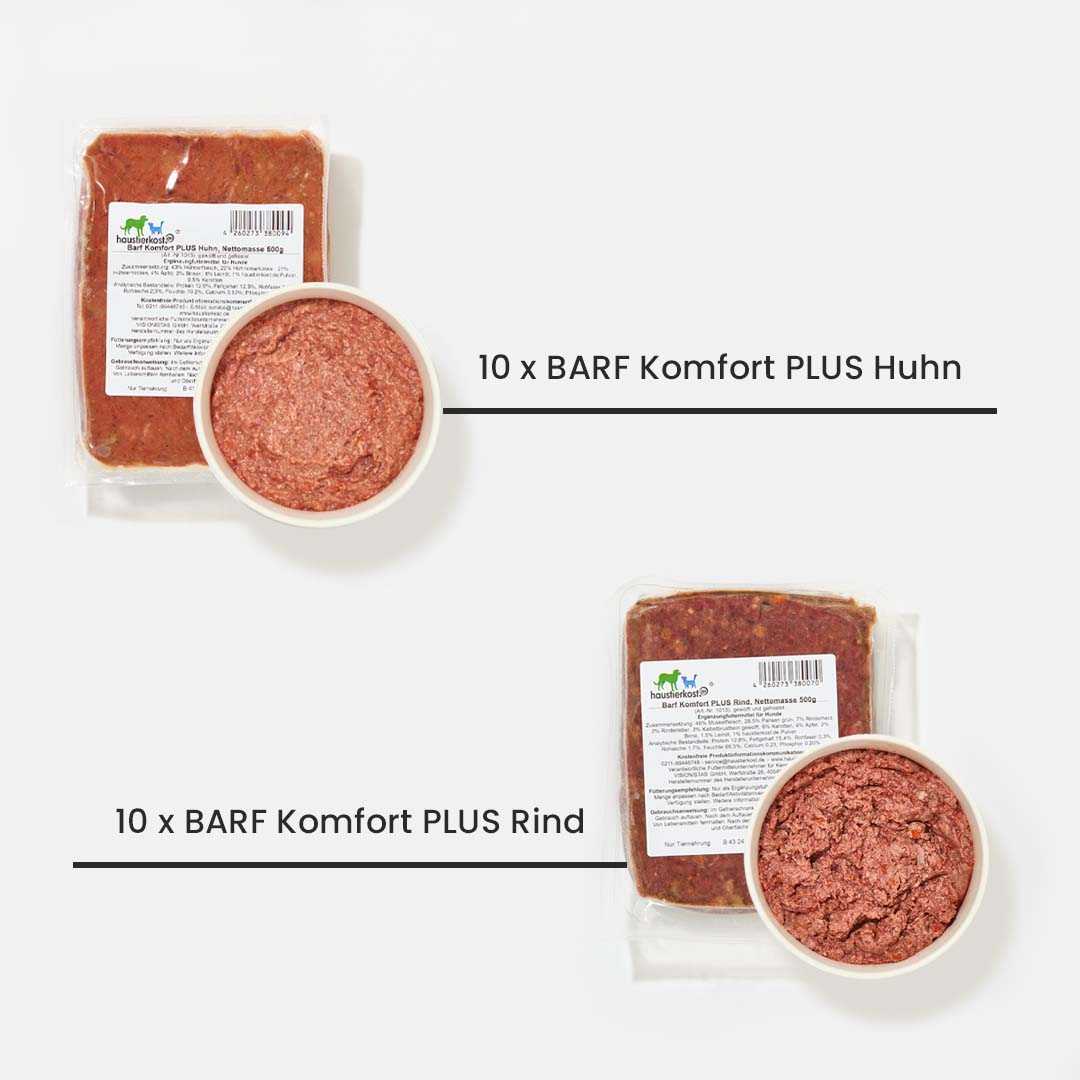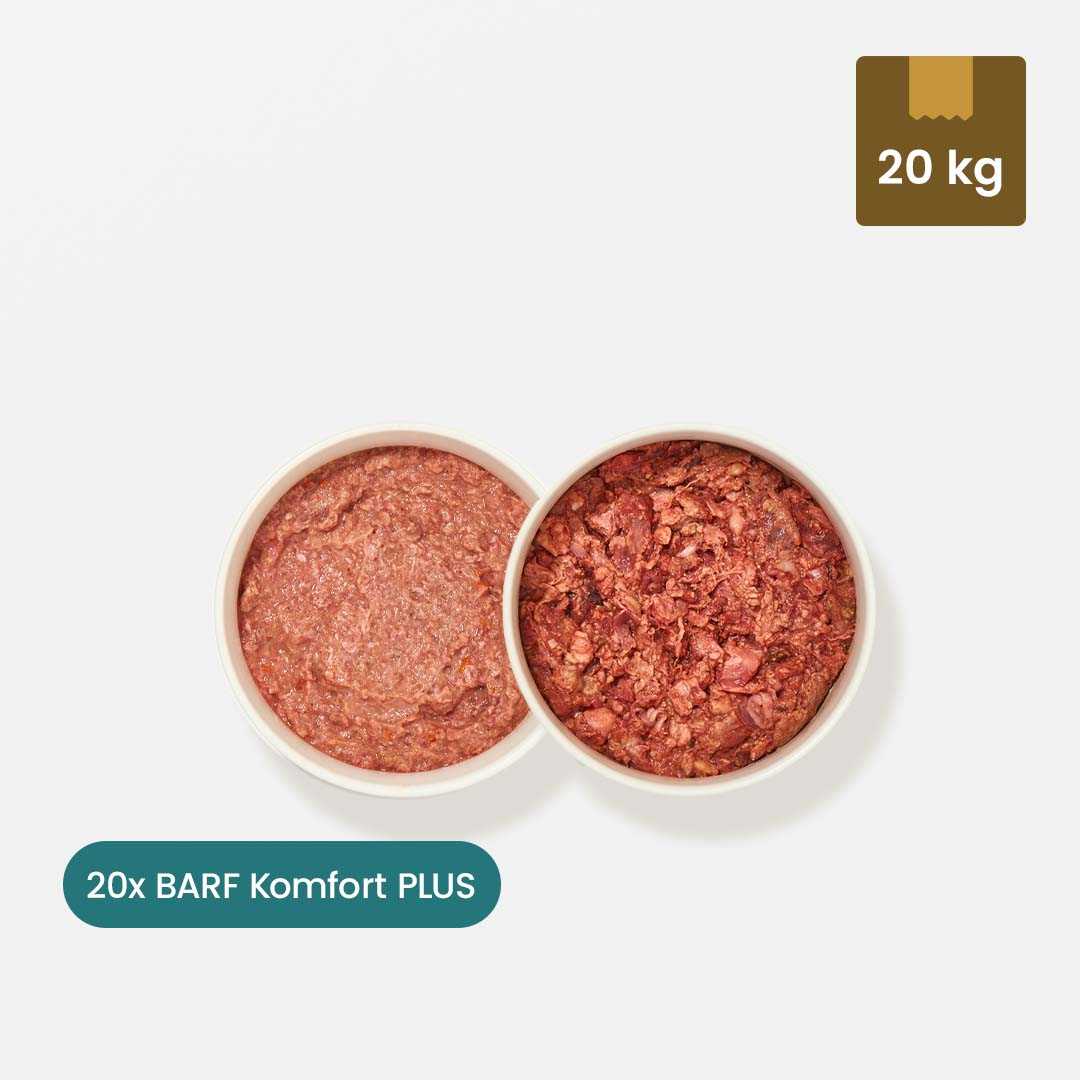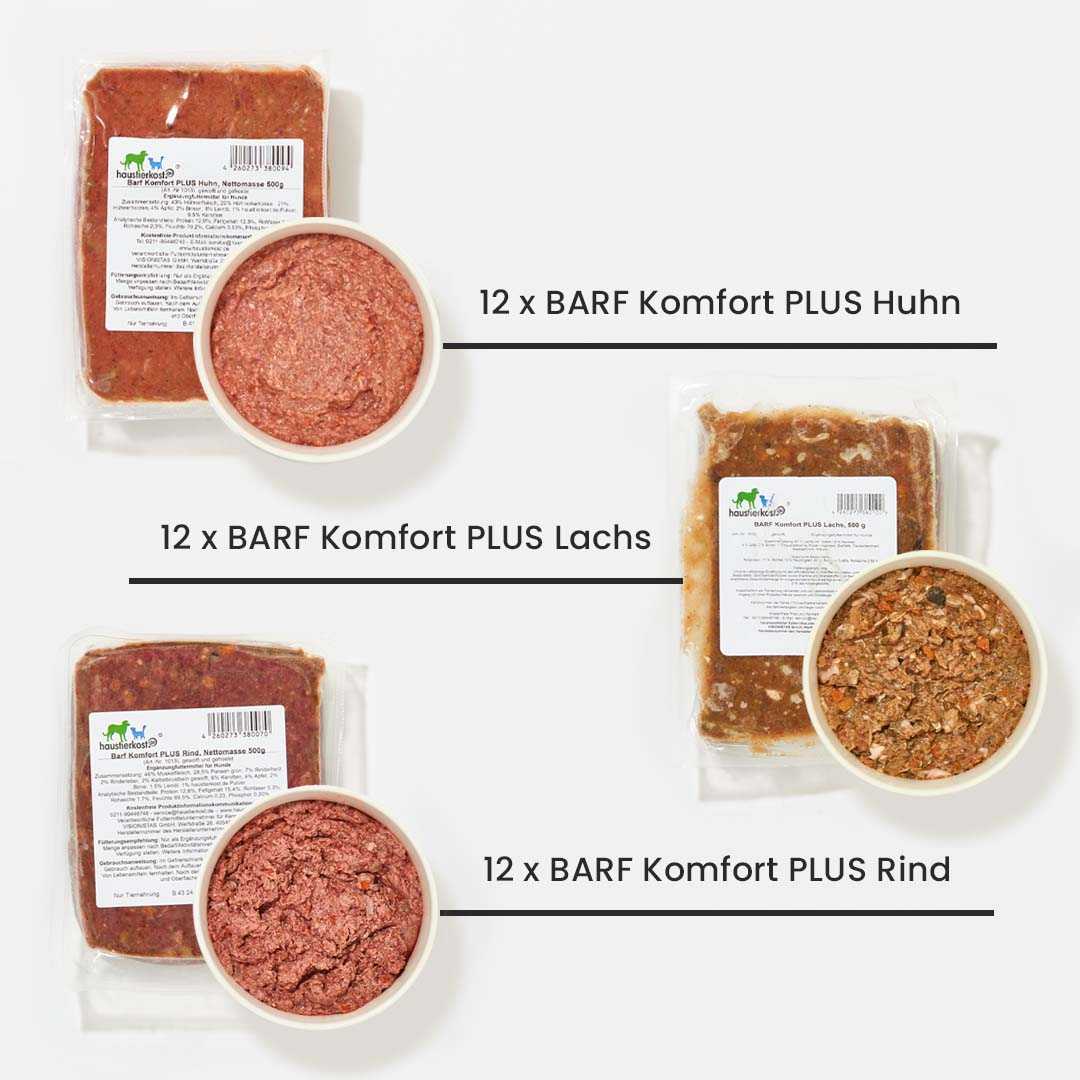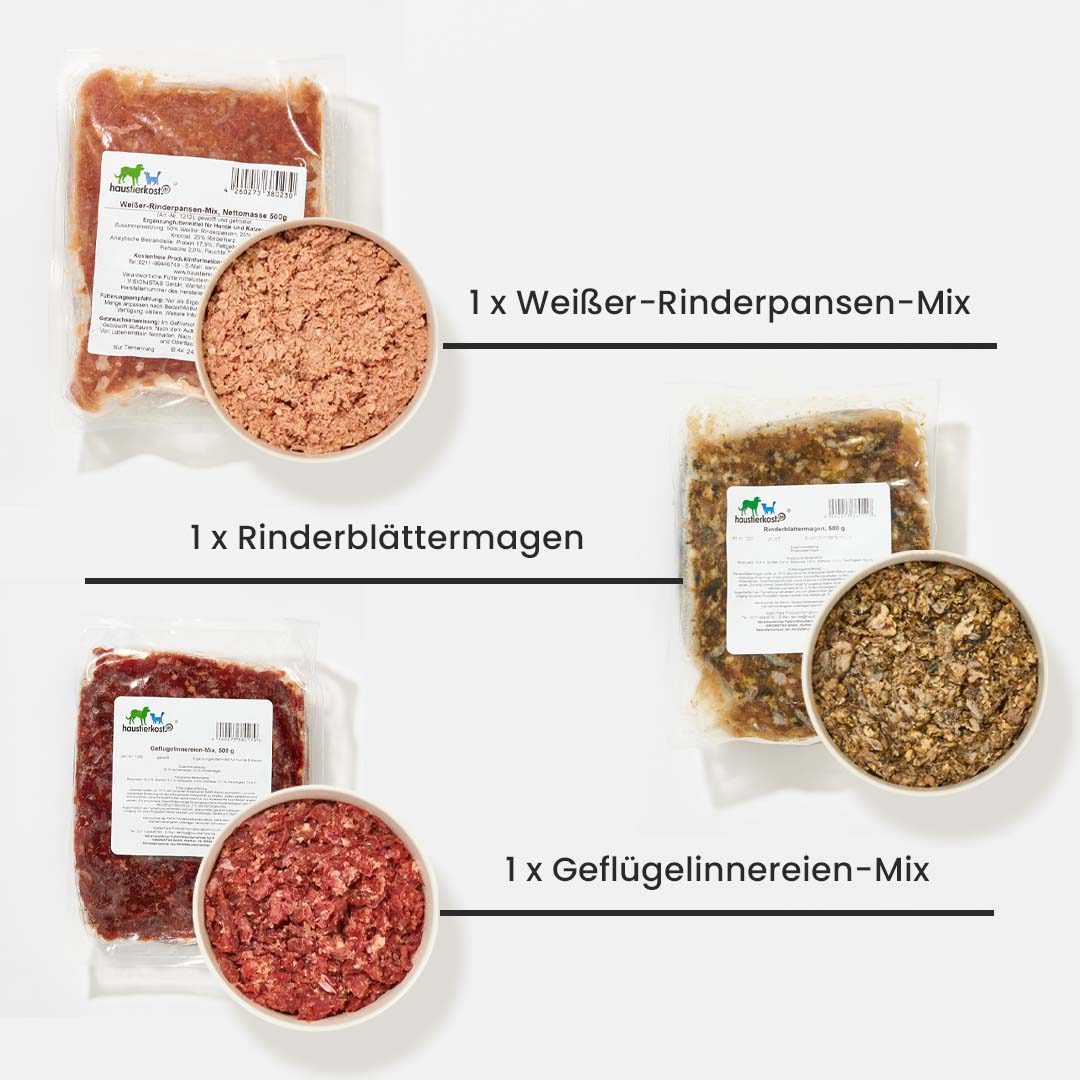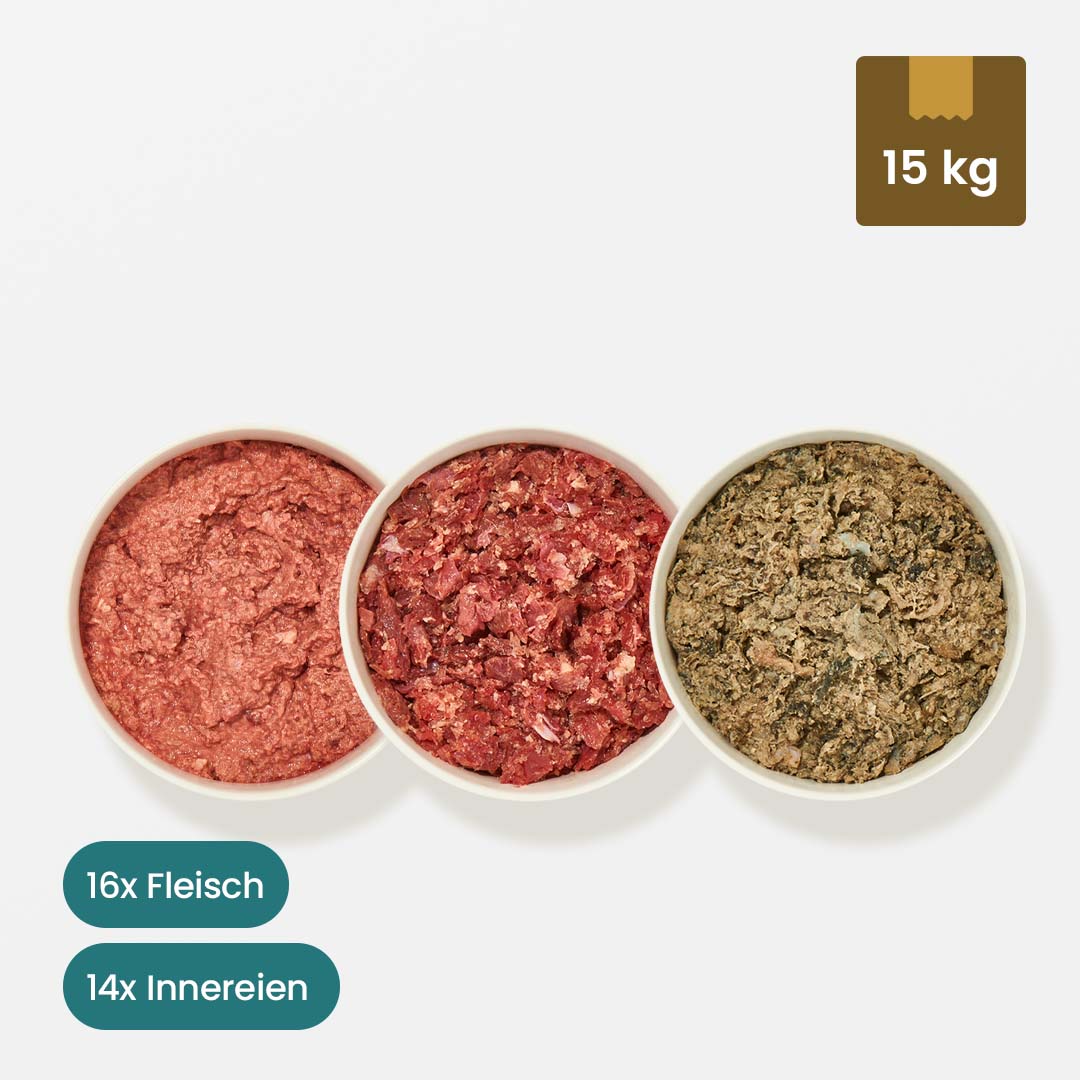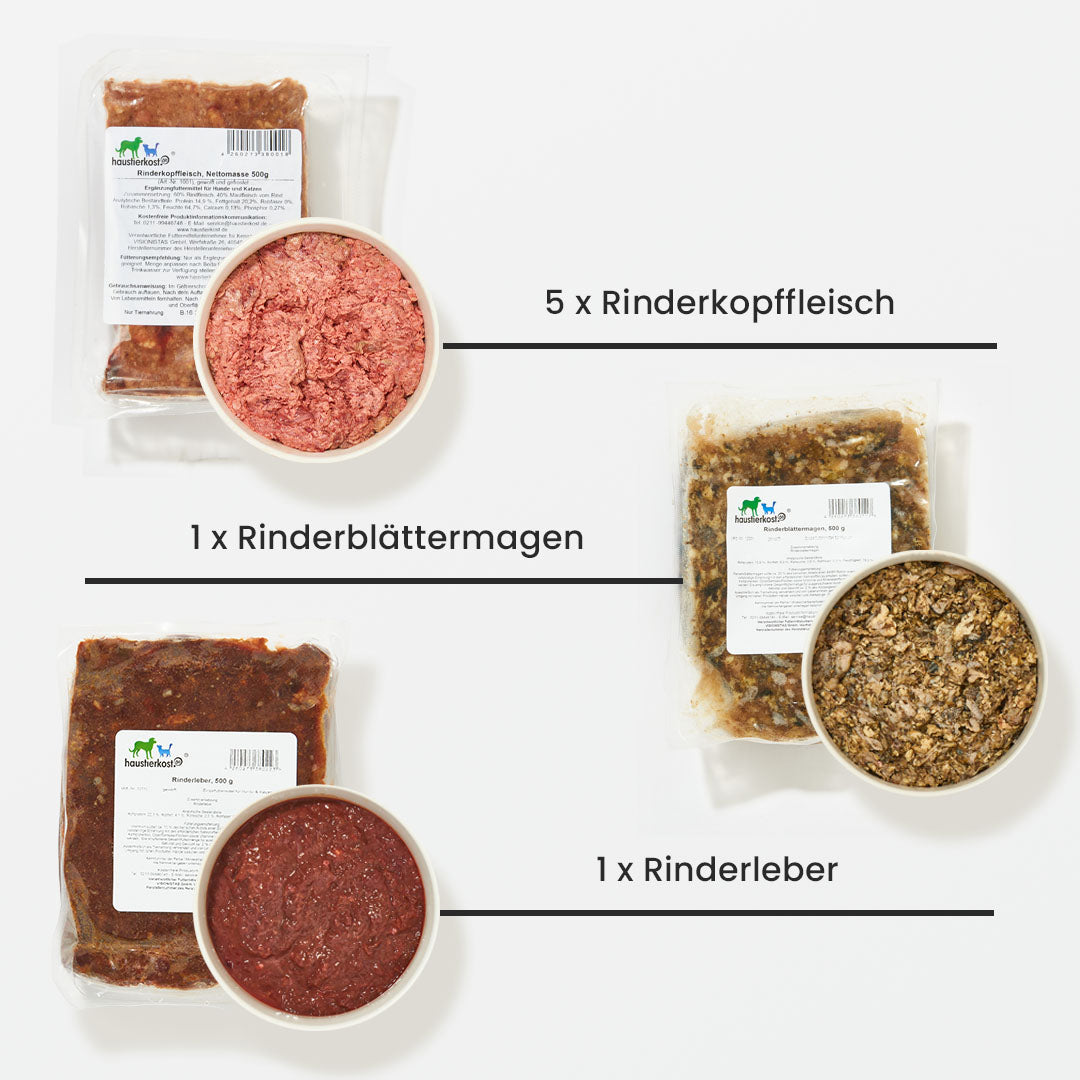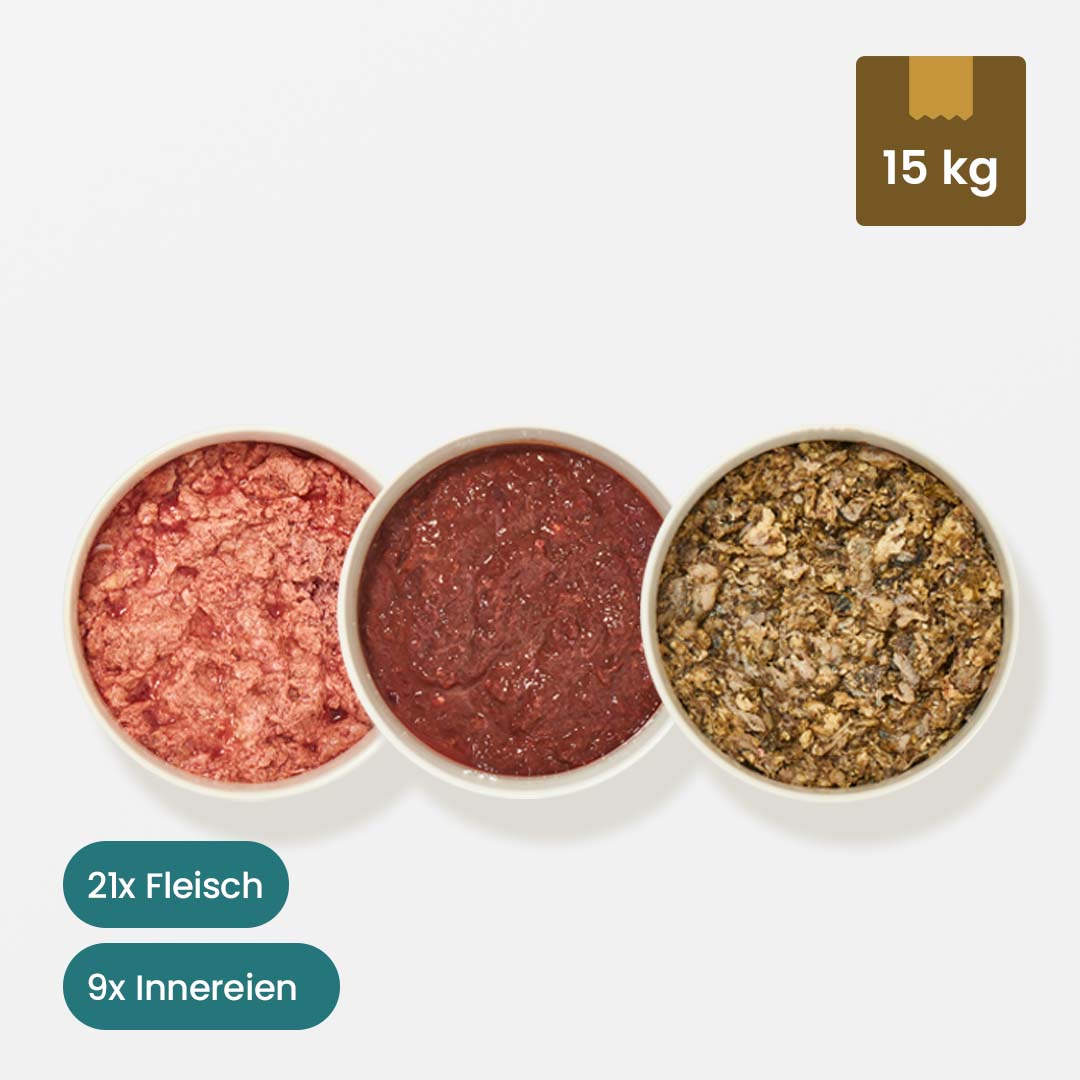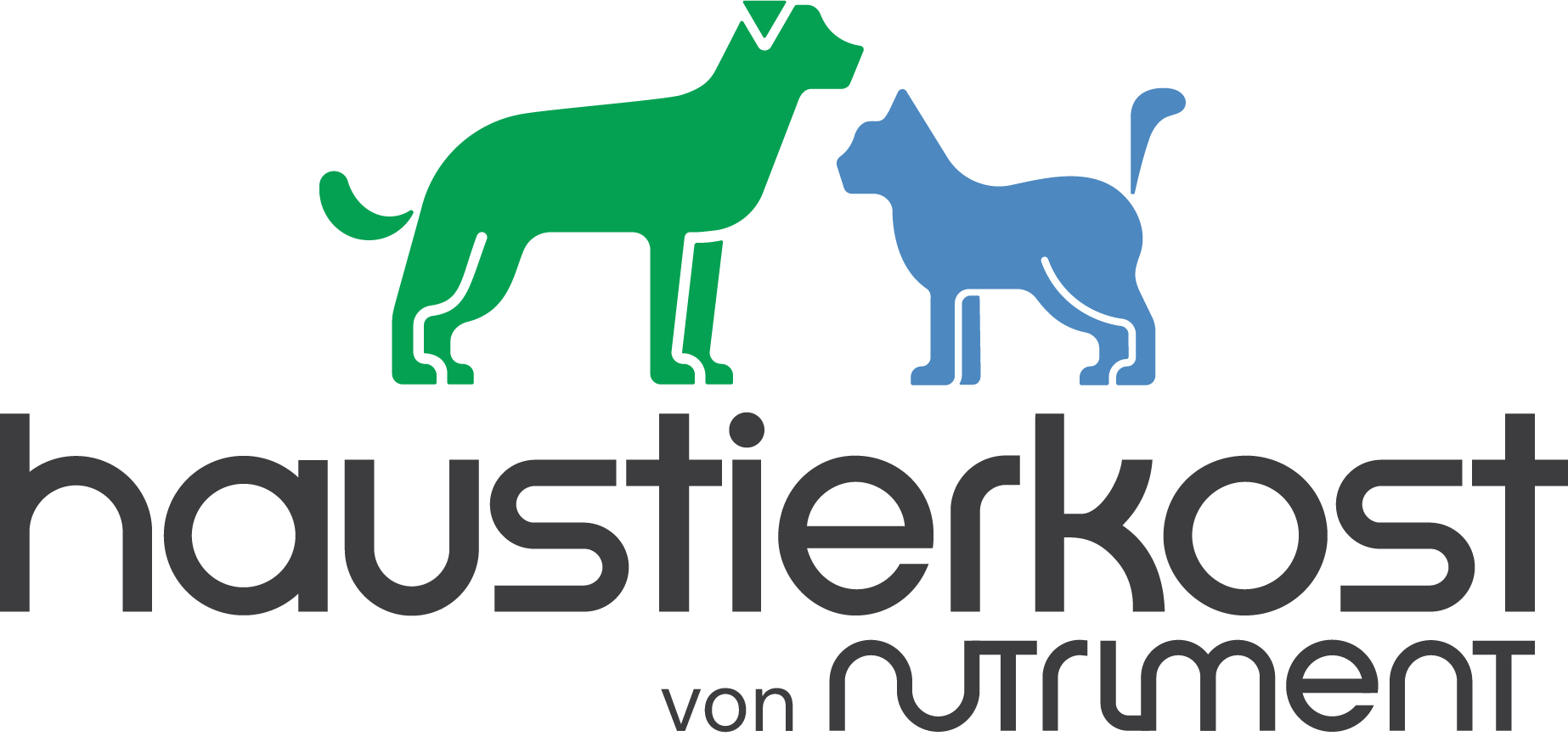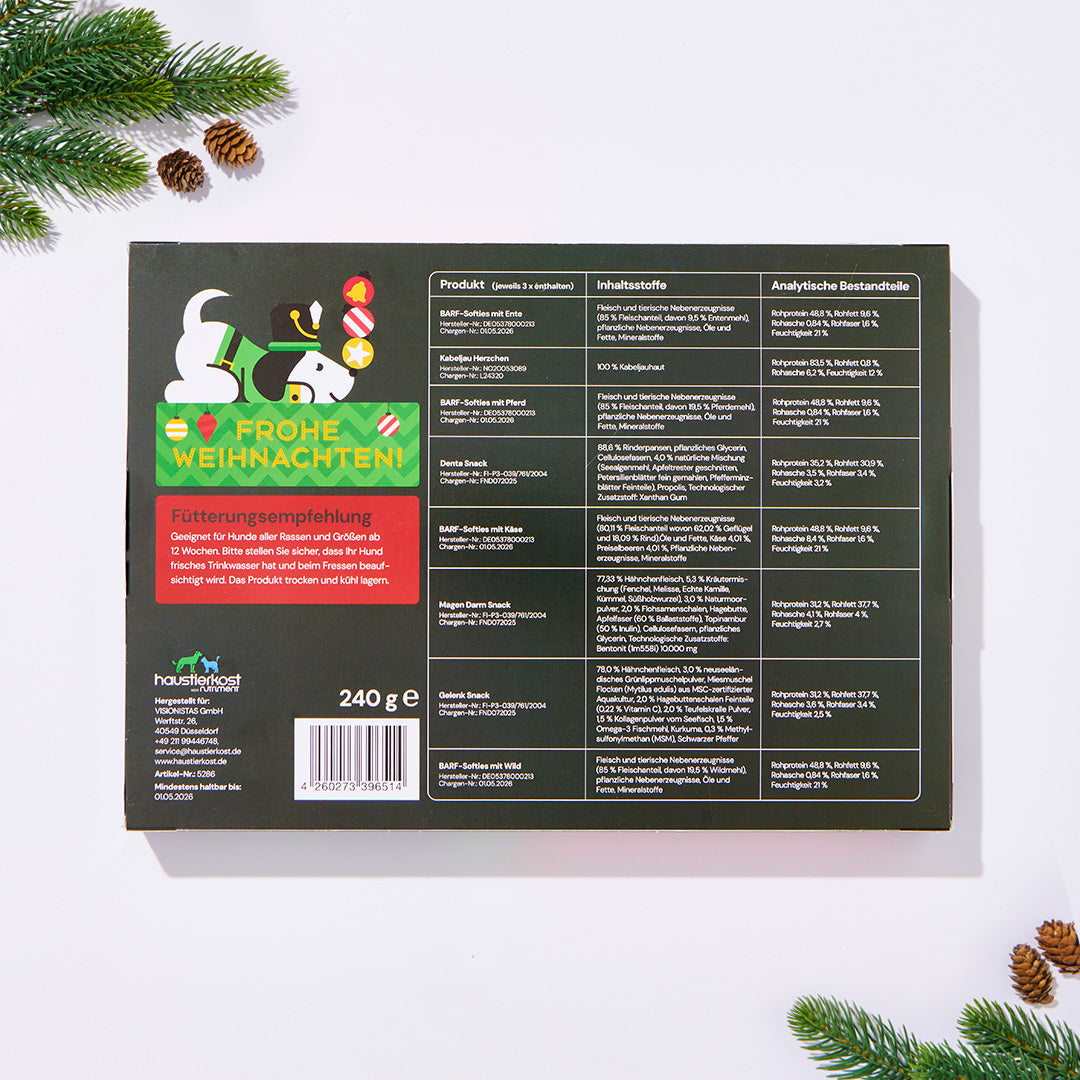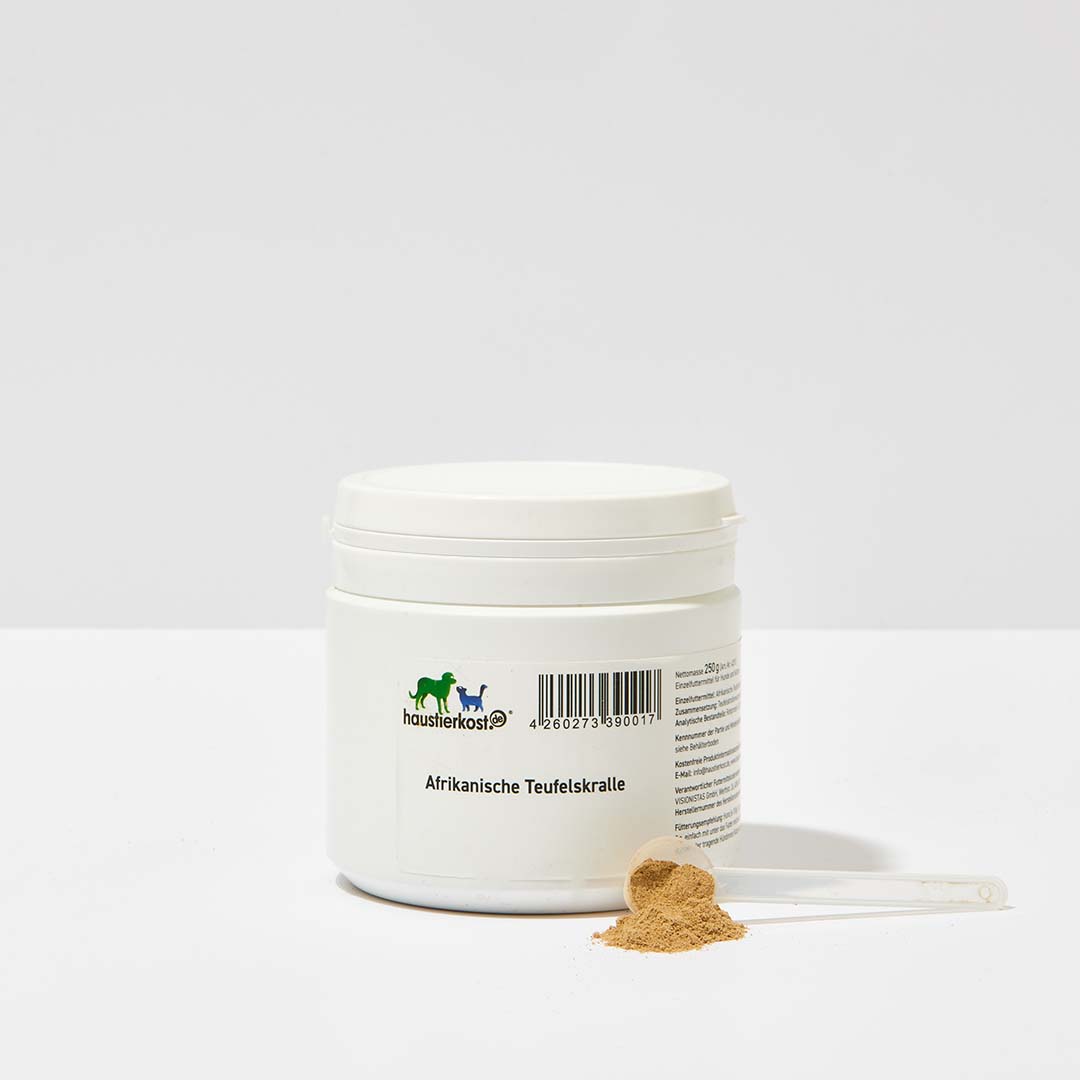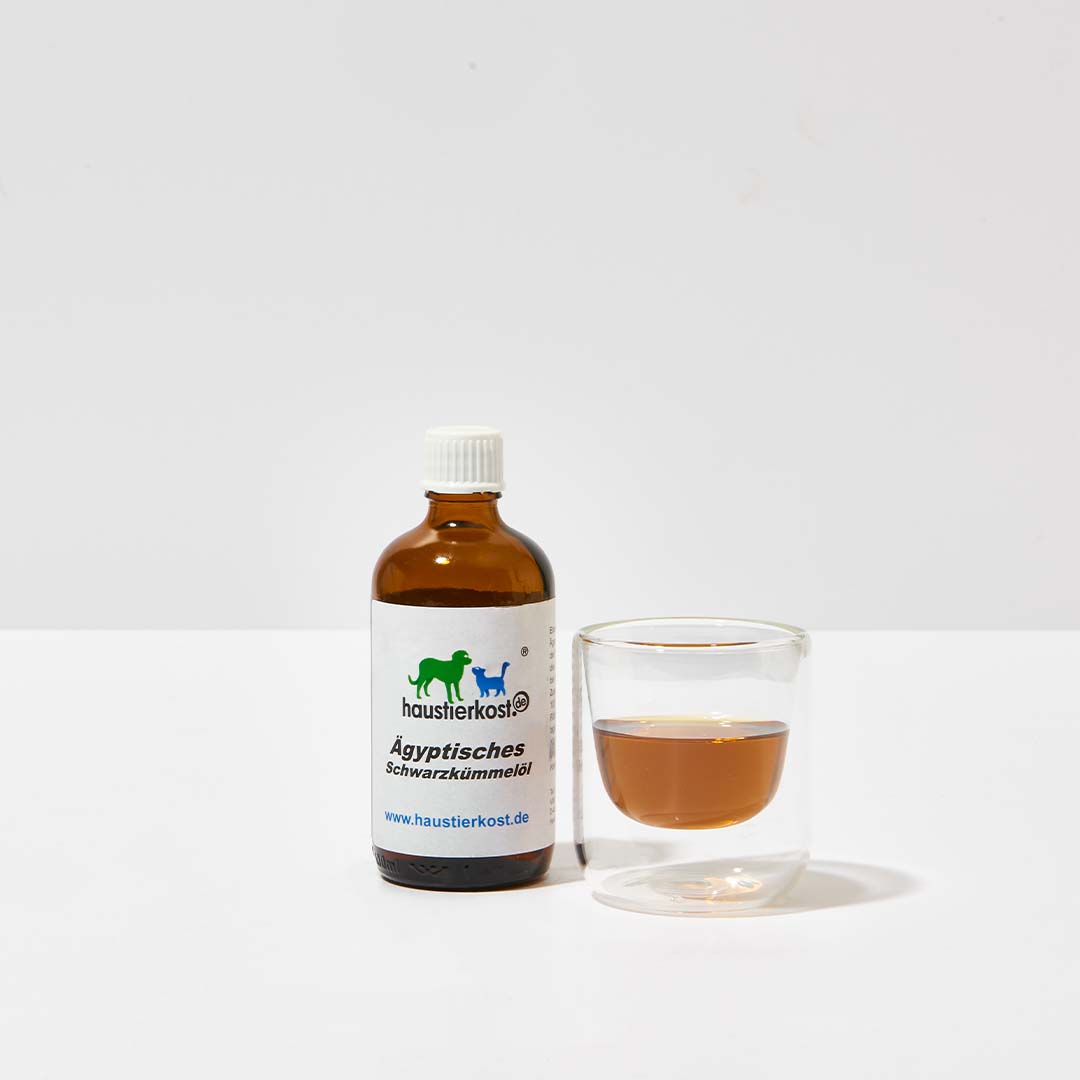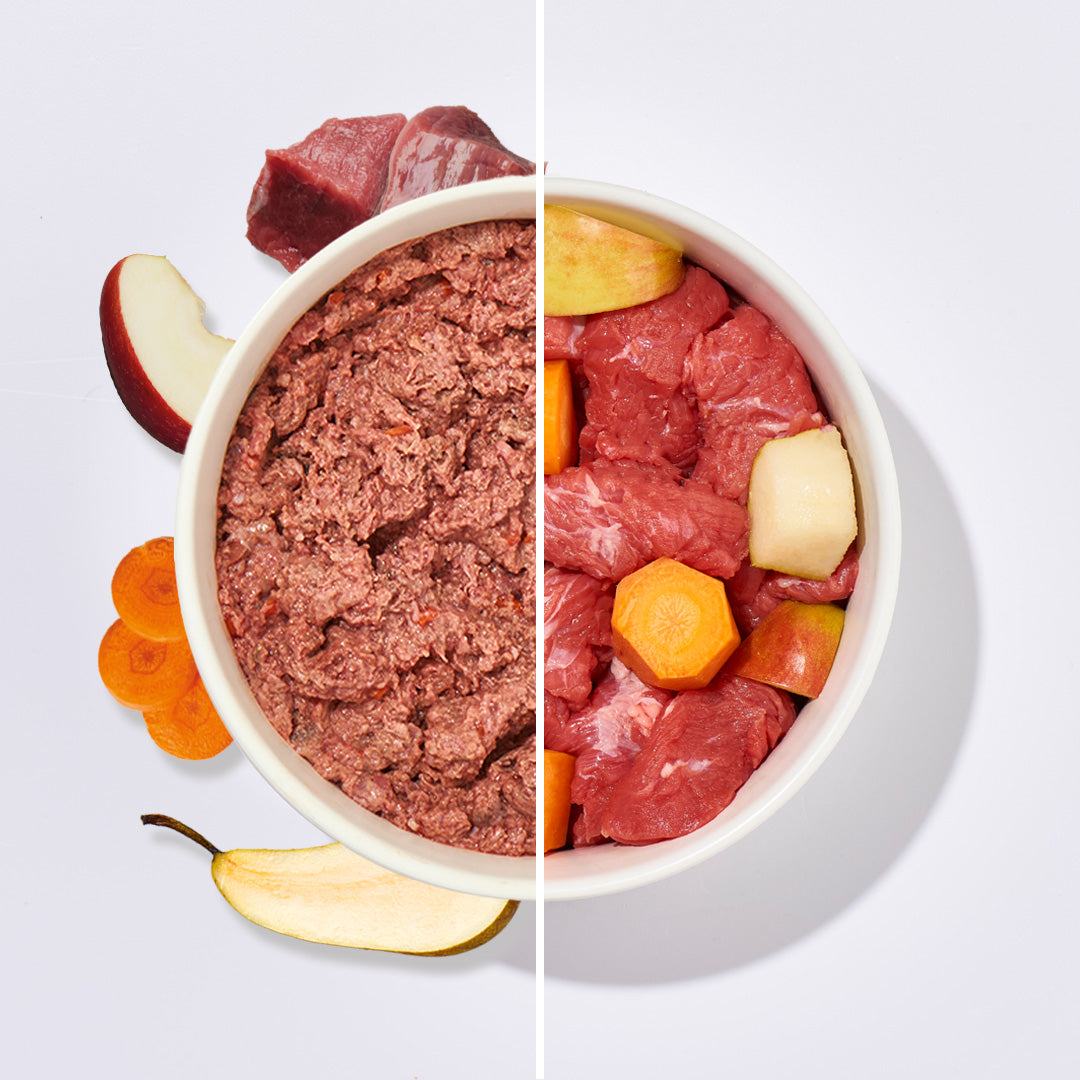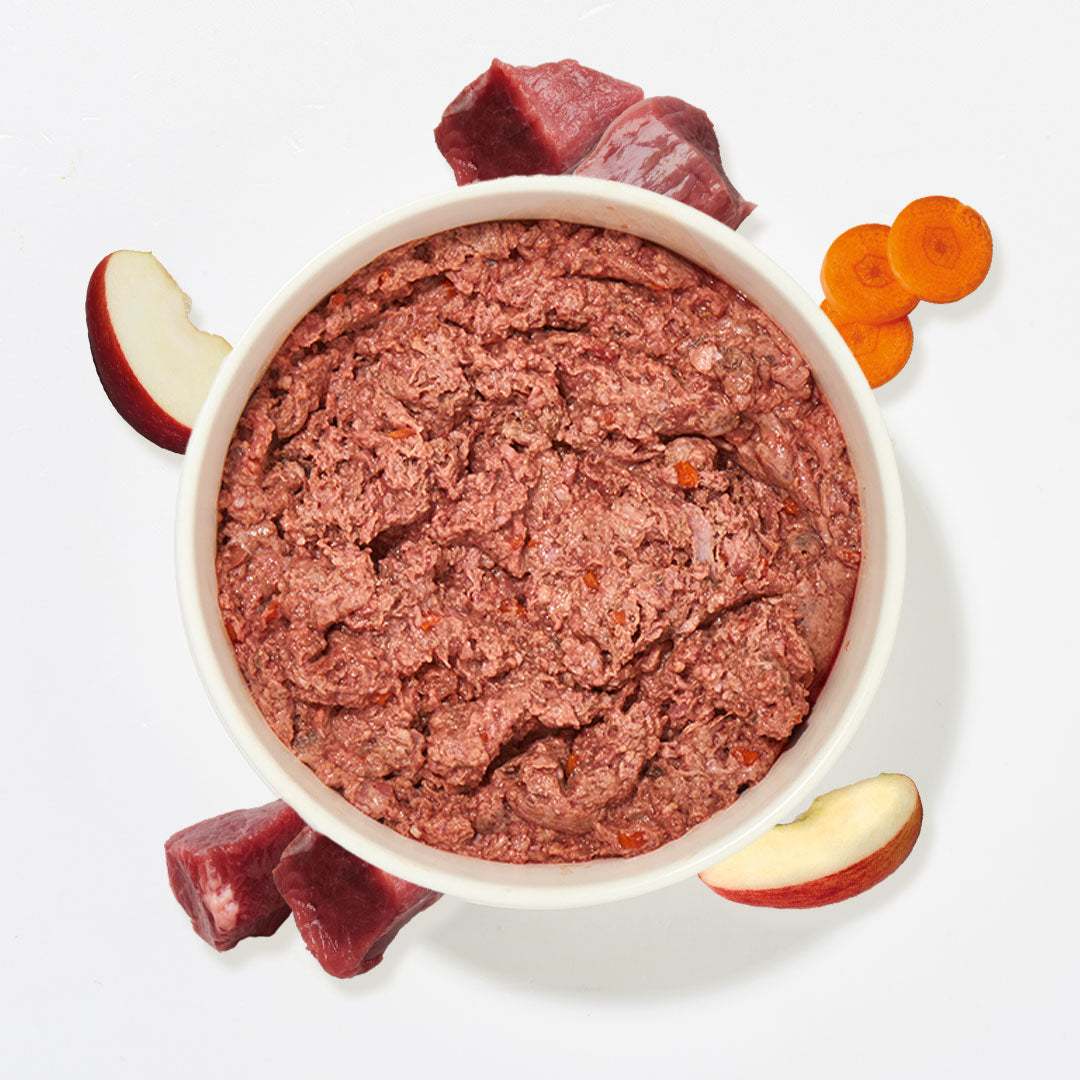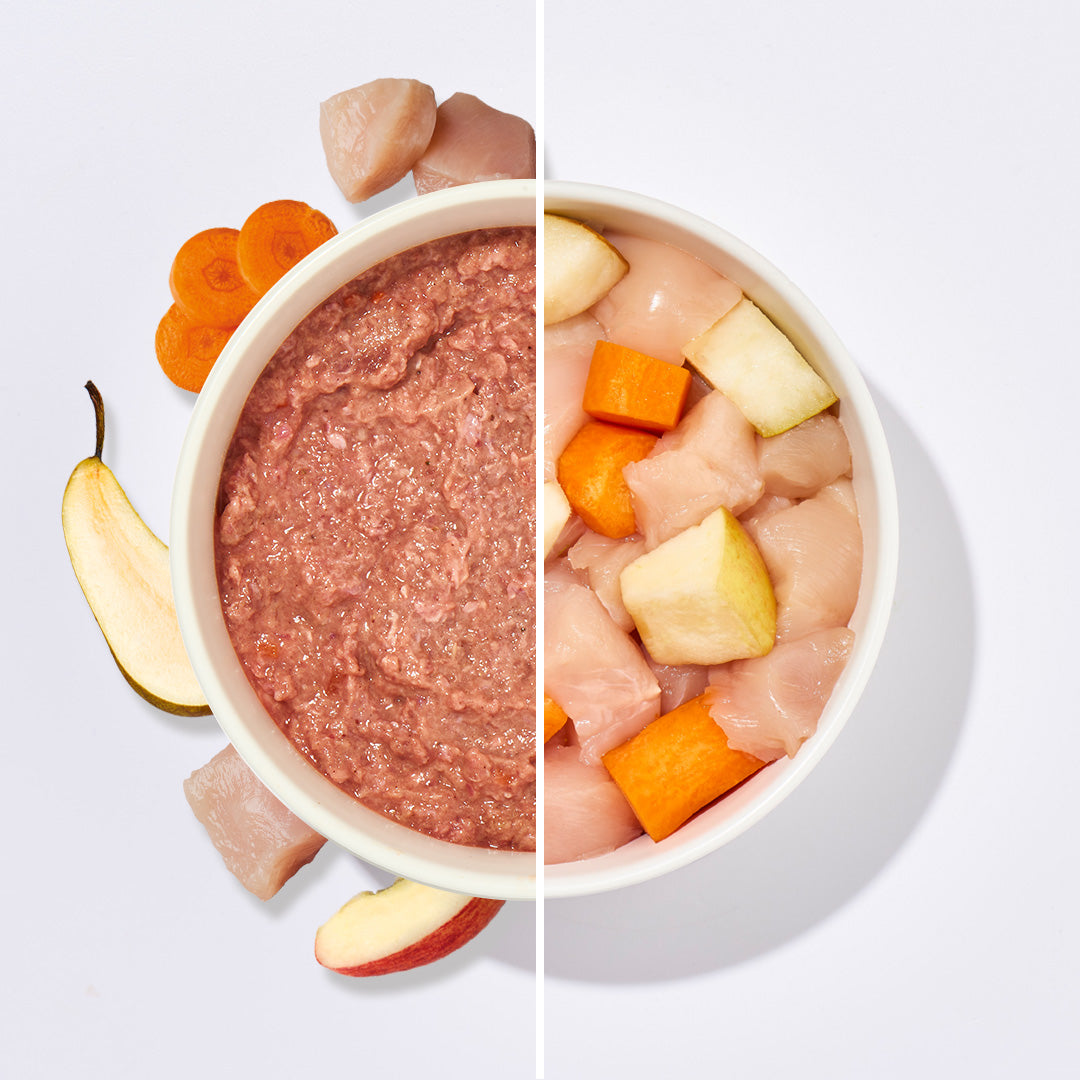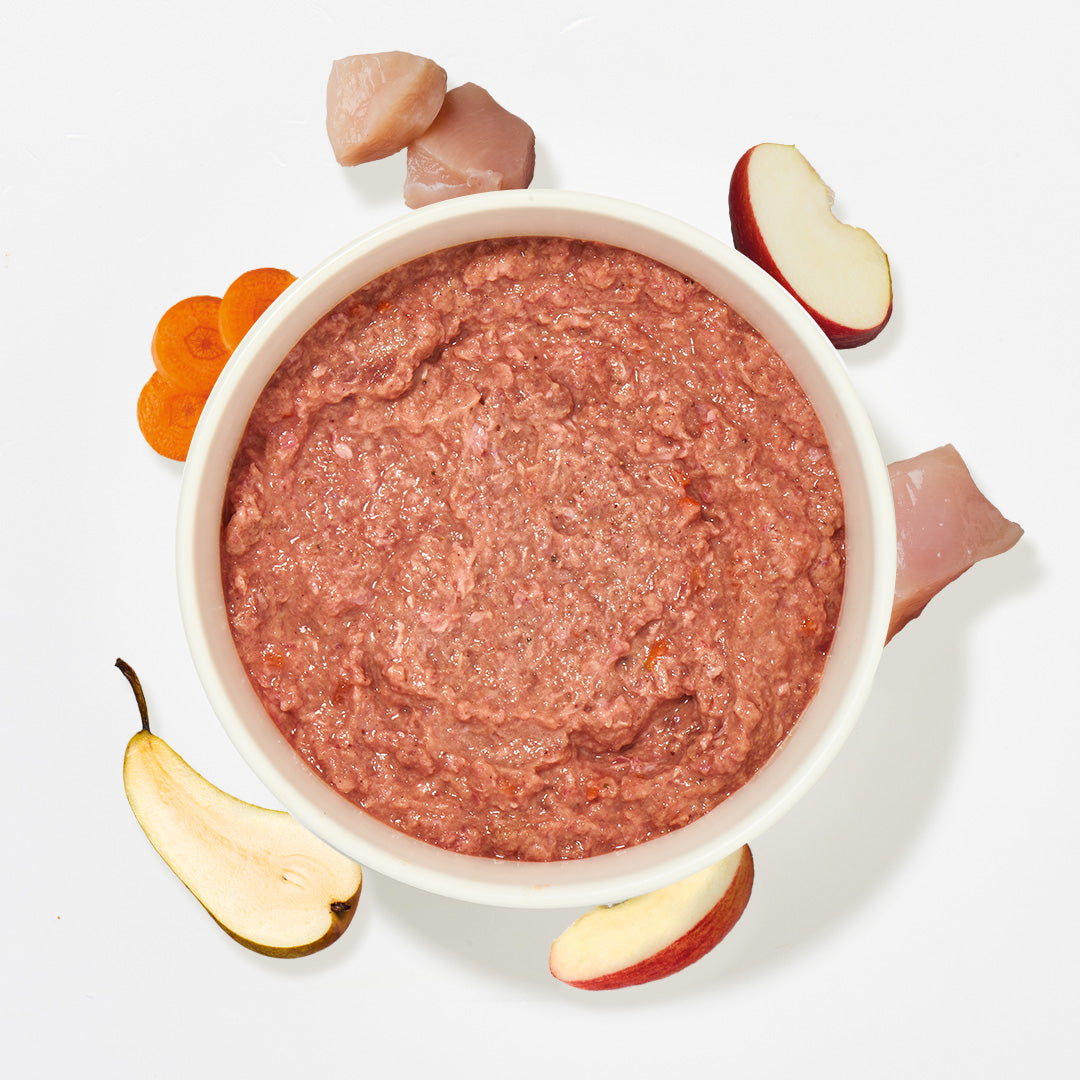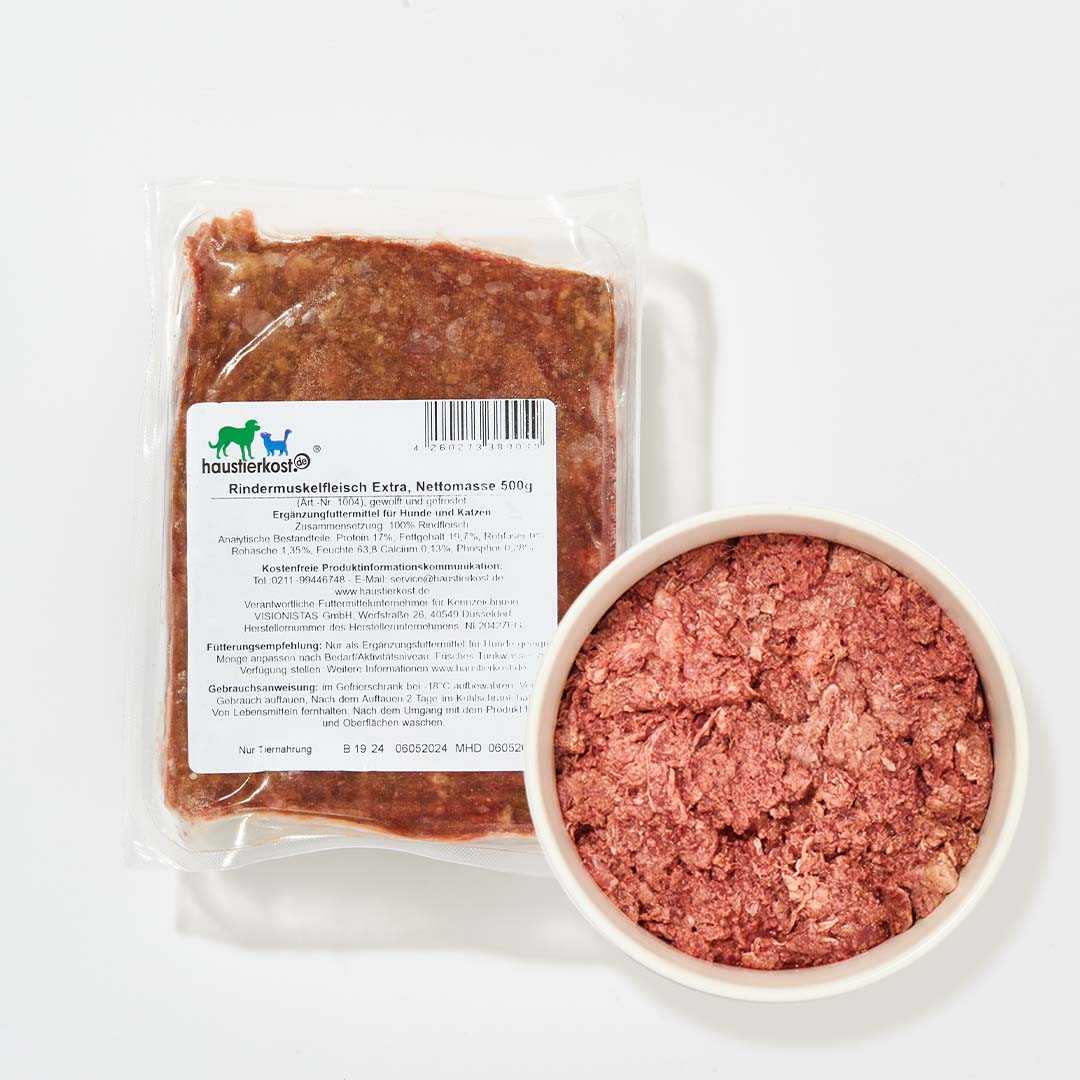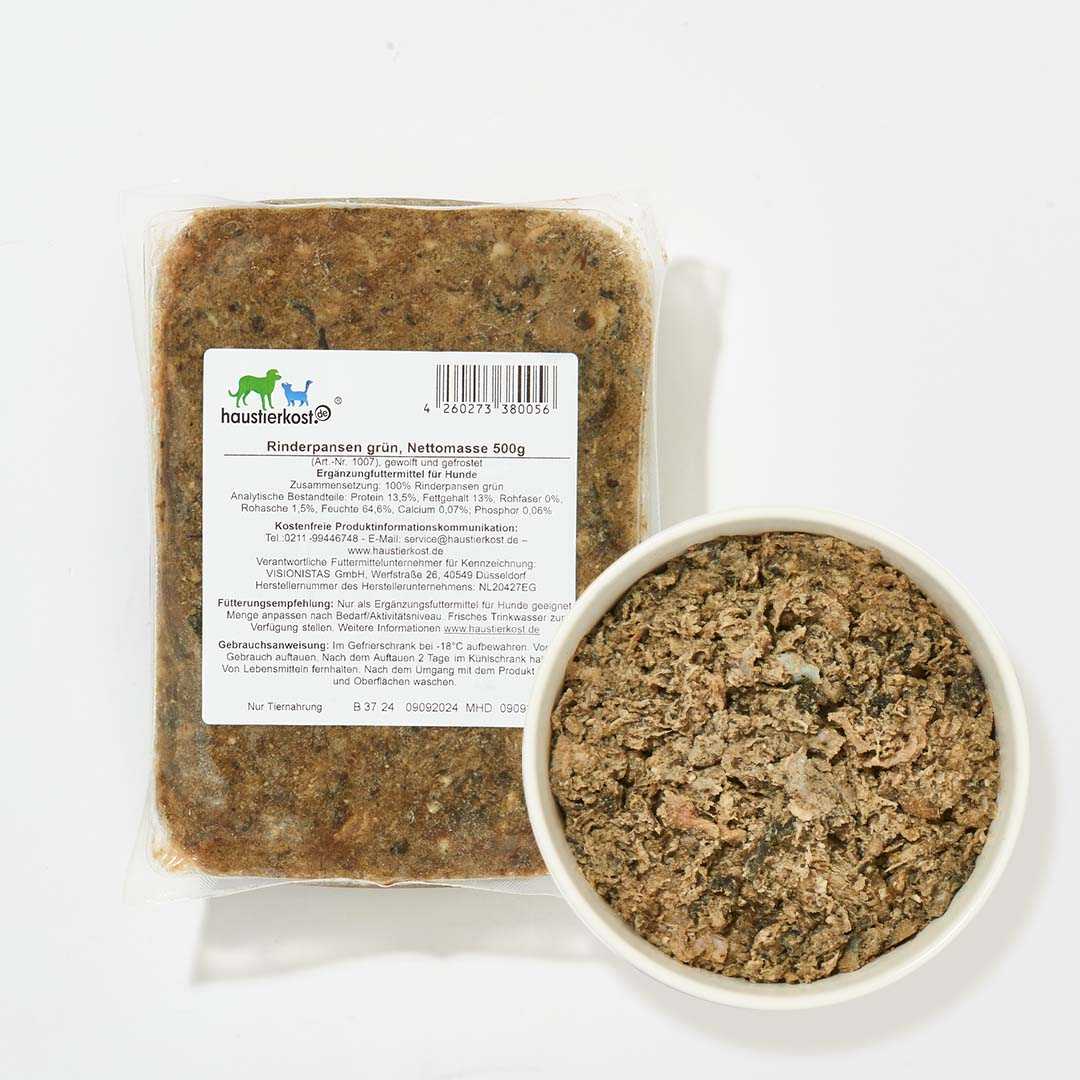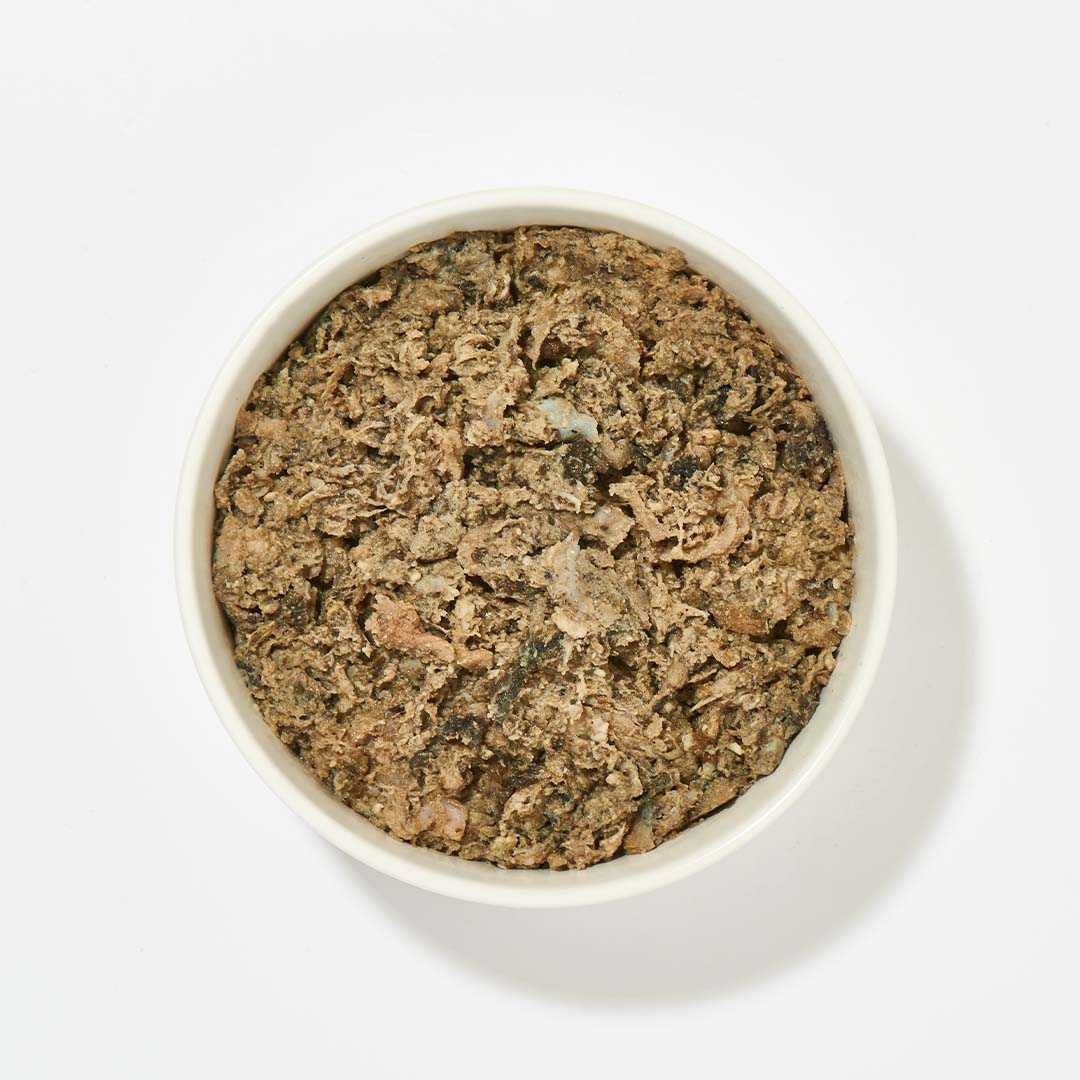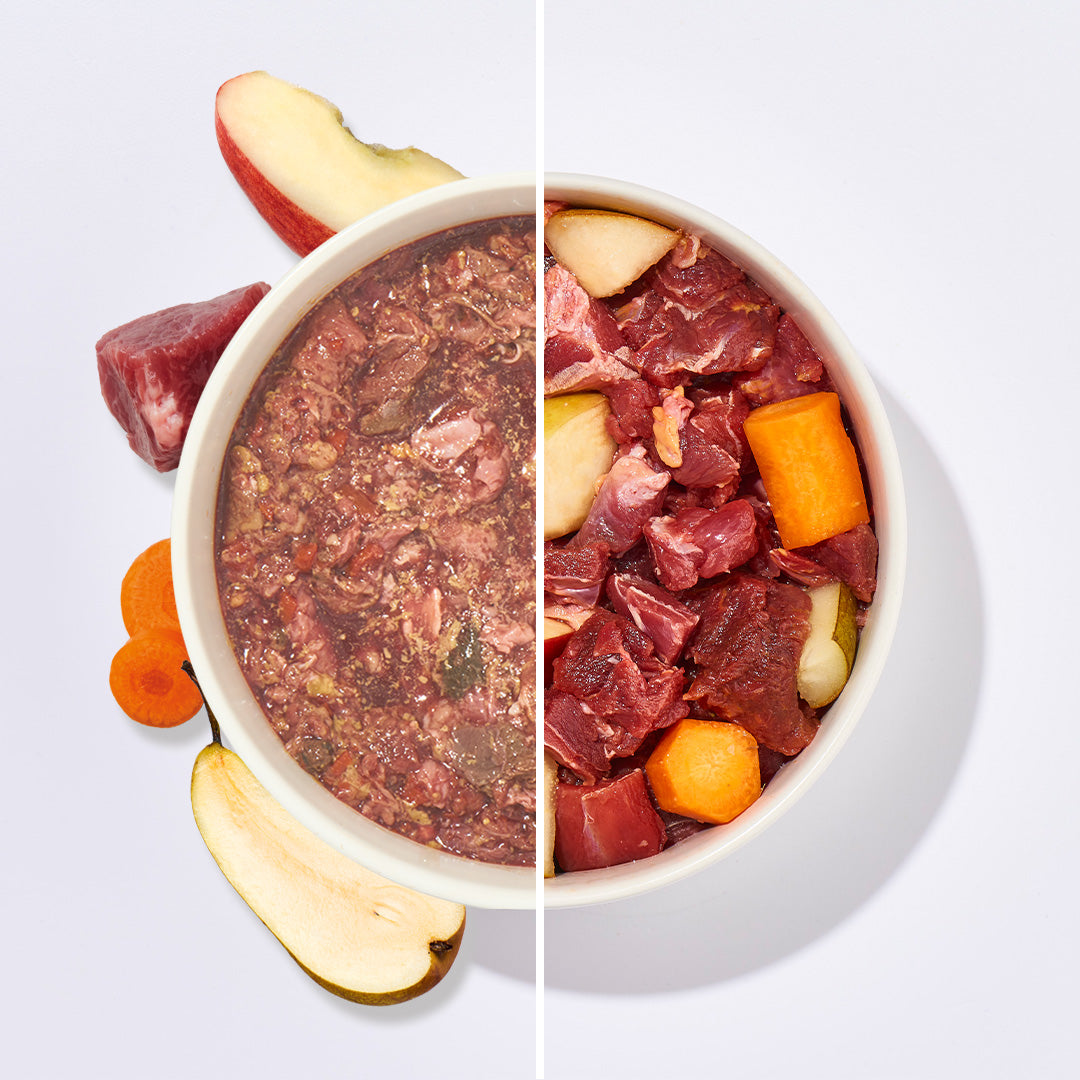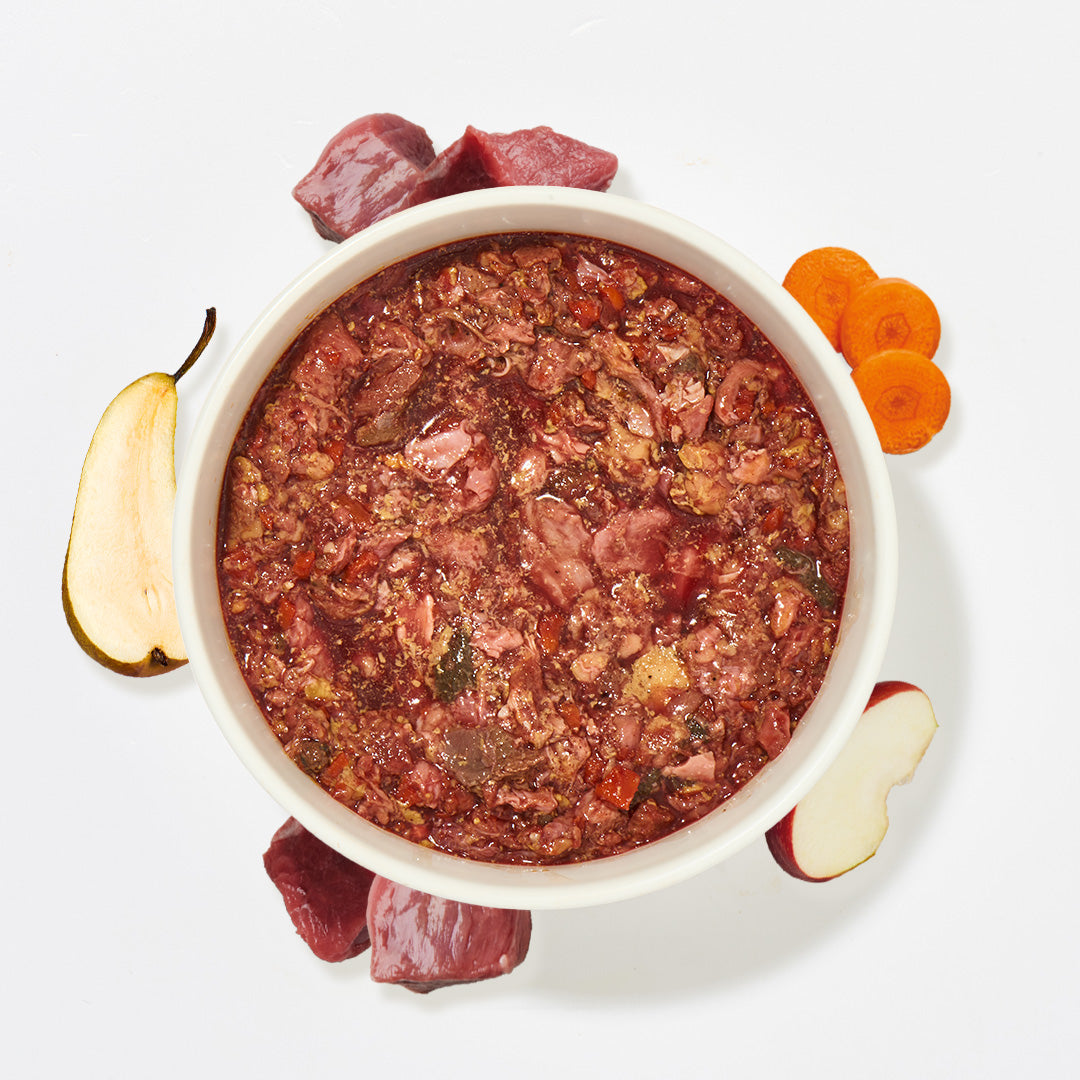We often receive questions such as "What is BARF?" or "What does BARF mean?", especially from interested people. We have taken these questions as an opportunity to briefly look back at the history of BARF in this article and explain the most important pillars of the method. Find out where the term " BARF " actually comes from, what it means in German and English, and what forms of BARF there are.
BARF meaning and definition: What does BARF mean?
What does BARF mean exactly? In German, the word "BARF" usually stands for "biologically appropriate raw feeding" or "biologically appropriate raw food". In fact, the term first became established in the English-speaking world, where it was established by proponents of raw feeding as an acronym for "Bones and Raw Foods" or, more similarly to the Germanized form, "Biologically Appropriate Raw Food".
The principle of BARF is based on offering the pet a food solution that essentially corresponds to the composition of a prey animal in nature. This means that all parts of the animal that dogs and wolves eat in the wild can also be part of the BARF diet. As far as we know, this method was first propagated by the Australian veterinarian Ian Billinghurst: He found that dogs that had been fed dry food had more health problems that were reduced or even completely eliminated when fed raw meat.
BARF initially developed in English-speaking countries, but since the early 2000s it has become increasingly popular in Germany. Thanks to high quality meat and a high level of knowledge about the nutritional needs of pets, BARF feeding can now be put together in a much more individual and varied way than a diet with dry or wet food.
BARF meaning – what do pet owners value?
Now that we have answered the question "What is BARF?", another one arises: What do pet lovers appreciate about BARFing? Feeding BARF meat and plant-based ingredients allows full control over the animal's diet - regardless of whether it is a dog, cat, or exotic animal such as a ferret. The aim is, on the one hand, complete transparency in the supply of high-quality products, and, on the other, species-appropriate nutrition. Many of our customers report that this leads to shiny fur, an improved constitution, and a reduction in previously occurring physical problems. Possible disadvantages, such as the comparatively higher amount of work involved in preparation, are either gladly accepted or can be offset by innovations such as ready-made BARF for dogs and ready-made BARF for cats .
Does BARF provide the animal with everything it needs?
There are various groups in the area of raw feeding that can differ in their philosophy. The most well-known debate is probably the "BARF vs. Prey Model" - the latter is even more focused on the prey aspect of BARF feeding. The plant-based portion of the food is largely omitted because it does not correspond to the actual conditions that prevail in nature.
Basically, if certain rules are followed, all nutrients can be fed in sufficient quantities when BARFing. This also includes using certain oils or other supplements that provide the animal with fatty acids, for example. You can try it out yourself or find out by talking to your vet which type of feeding is best for your animal. If you would like to try BARFing, our practical BARF calculator will help you.
